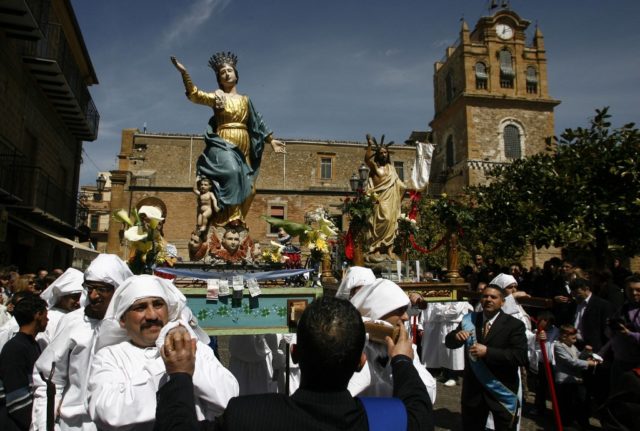La Bella Vita is our regular look at the real culture of Italy – from language to cuisine, manners to art. This new newsletter will be published weekly and you can receive it directly to your inbox, by going to newsletter preferences in ‘My Account’ or follow the instructions in the newsletter box below.
Sooner or later, every native English speaker in Italy experiences a moment of confusion upon hearing an Italian use an English-sounding word and having absolutely no idea what they mean by it. For example, I remember being puzzled by Italians talking about going to Rome on a ‘pullman’, which turned out to be a coach, and mildly alarmed when they suggested we go ‘footing’, which I later discovered was what we’d call jogging.
You may have found that there are numerous English-sounding words used in Italian which we’ve never heard before, as well as words we do know but which have taken on new meanings, or at least very different pronunciation. These terms are called anglicismi (‘anglicisms’) in Italian and there are about 9,000 of them recorded by Italy’s Treccani dictionary.
While such words may seem harmless (if a little bemusing) to foreigners, some Italians really don’t like them – including members of the current government, which last week proposed a ban on being used in public offices, advertising, and business. The announcement has reignited a debate in Italy between those who want to protect the Italian language from outside influence and those who believe languages are fluid, interconnected, and constantly evolving.
The article below looks at what’s going on and explains some of the most common anglicismi used in Italy today.
‘Anglicismi’: The English words borrowed into Italian – and what they mean
And as the Easter weekend begins, here’s a look at the traditional Italian events to take part in, the foods to taste, and also what sort of weather and traffic conditions to expect if you’re planning a weekend away or just a day trip within the country over the coming days.
The essential guide to Easter 2023 in Italy

Easter is a key event on the national calendar in overwhelmingly Catholic Italy, so perhaps it’s not surprising that the Italian language is laden with Easter-related expressions – some of which can be used all year round.
We’ve put together six of our favourites in the article below. Bonus points if you manage to drop any of these into conversation at Easter lunch with Italian friends or family.
Six Easter-inspired Italian phrases explained
You might have heard of the passeggiata, but what about the struscio? This more extravagent and perhaps flirtatious version of the glamorous Italian evening stroll is typical of southern towns, and it means going all out in order to impress.
Writer Silvia Marchetti explains what it’s all about, and why Italians tend to be so concerned about what other people think of their appearance, anyway.
‘Struscio’: Why Italians care so much about this sacred evening ritual
Remember if you’d like to have this weekly newsletter sent straight to your inbox you can sign up for it via Newsletter preferences in “My Account”.
Is there an aspect of the Italian way of life you’d like to see us write more about on The Local? Please email me at [email protected].




 Please whitelist us to continue reading.
Please whitelist us to continue reading.
Member comments